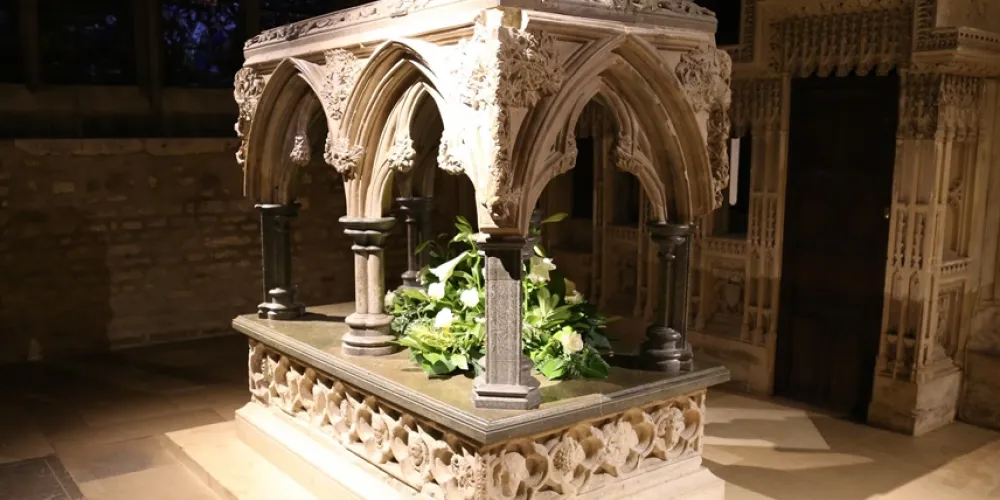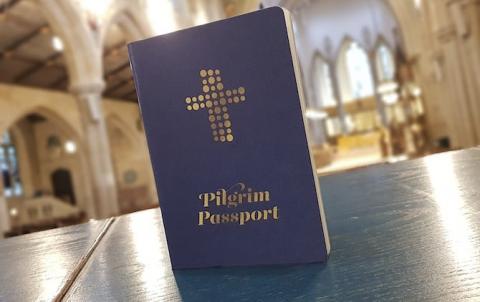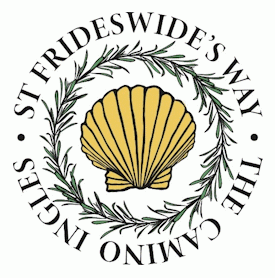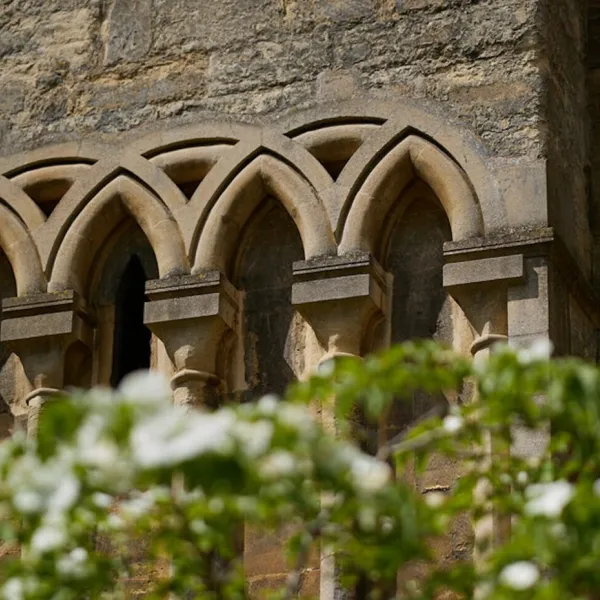Christians have felt drawn to pray at the Shrine of St Frideswide for many centuries.
St Frideswide
The bones of Saint Frideswide were enshrined in 1289 in a precious reliquary raised up on a magnificent new shrine-base of limestone and Purbeck marble, and the Latin Chapel rebuilt as a sumptuous setting for the new shrine. Many came to pray for healing, from nearby and from far away; in the 16th century, Catherine of Aragon prayed at the Shrine in the hope of giving birth to a son.
The structure was demolished in Henry VIII’s reign, and the major pieces built into the lining of a well. For four hundred years the shrine was entirely absent. After the pieces of the shrine-base were discovered, some in the 1870s and others in 1985, a reconstruction of the base was commissioned; it now stands in the Latin Chapel, on the site of the original shrine, incorporating the original pieces and replacements for missing pieces made from marble and resin.

Today, people remain drawn to the Cathedral's Latin Chapel and the Shrine it houses because they sense this is a place where the veil between our earthly life and the Kingdom of Heaven is very thin. It is a place that has been soaked in prayer over the centuries.
-
What is pilgrimage?
Pilgrimage is a universal theme. Its roots are centuries old. Since the very first people to hear the Gospel story journeyed to Jerusalem to walk in the steps of Jesus, Christians have found spiritual insight, wisdom and healing in travelling to the places that are special to our faith.
Pilgrimage is a spiritual journey to a sacred site. The travelling and the destination are inseparable – the journey is as important as the end. It is a physical thing: it is in the action of travelling, of encountering the new and the unfamiliar, of allowing ourselves time and space away from the routine of everyday life that we receive insights and spiritual growth.
But although the journey can take many days or weeks, shorter pilgrimages are possible too. All you need is a pilgrim spirit, a recognition that life is a journey, coming from God and returning to God.
As we walk together, pilgrims rather than strangers, our encounters, our conversations, our experiences good or bad, can act as a stimulus towards further spiritual reflection and dialogue – not stumbling blocks, but stepping-stones. And always as we do this we remember the pilgrim who comes towards us from the opposite direction. In Jesus Christ, God comes in search of us
-
Who was St Frideswide?
St Frideswide is the name of a Saxon princess and healer who became the Patron Saint of Oxford. Her name combines the noun meaning ‘Peace’ (frith) with the adjective ‘strong’ (swith).’
There are no contemporary accounts of Frideswide’s life. However, legend suggests that the young Frideswide became a nun. In spite of her vow of chastity, she was propositioned by King Algar of Leicester who was determined to marry her. As a result, she was forced to flee the city for the countryside and found religious sanctuary in a monastery close to the Thames.
After a lengthy chase, God struck King Algar blind. Realising the error of his ways, Algar asked Frideswide for forgiveness and she granted it, after which his sight was restored. Frideswide went on to have a reputation as a healer and a beloved figure of great piety and prayerfulness.
St Frideswide founded the religious community on which Cathedral is based. Her priory had a missionary function of catechesis and teaching, and providing for poor and sick. She is believed to have died in 727.
St Frideswide’s Priory was destroyed and rebuilt more than once. But following the completion of the Priory in 1180, the then Archbishop transferred her remains into a shrine. Her remains were later placed in the present shrine in 1289, by which time the saint had become an object of veneration and pilgrimage due to her healing miracles.
The Shrine – the oldest monument in the Cathedral – was destroyed in 1538 during the Reformation and St Frideswide’s bones were buried elsewhere in the Cathedral. Fragments of the original shrine were recovered in the nineteenth century, and the Shrine you see today is the result of painstaking reconstruction.
The St Frideswide Window by Edward Burne-Jones in the Latin Chapel tells the story of St Frideswide in a number of stained-glass panels.
Every year, we celebrate the Feast of St Frideswide on or near her saint’s day, 19 October.
-
What is on offer for pilgrims today?
People have always gone on journeys to enrich their spiritual lives. The desire seems deeply ingrained in human nature.
Pilgrimage is enjoying something of a boom today. Large numbers of people – including many who would not consider themselves Christians – are embarking on some of the great pilgrim paths. The best-known is probably the Camino to Santiago de Compostela.
In normal times, visitors to our Cathedral are welcome to make their visit in a pilgrim spirit. Pilgrims are most welcome to pray at the Shrine of St Frideswide. You are particularly invited to use the diocesan pilgrim prayer:
'Pilgrim God,
You are our origin and our destination.
Travel with us, we pray, in every pilgrimage of faith, and every journey of the heart.
Give us the courage to set off, the nourishment we need to travel well, and the welcome we long for at our journey’s end.
So may we grow in grace and love of you and in the service of others.
Through Jesus Christ our Lord, Amen' -
What is the Centre for Christian Pilgrimage?
Christ Church Cathedral is the home of the Centre for Christian Pilgrimage which has been established to support the development of pilgrimage as a tool for discipleship.
We aim to share resources and offer practical training and theological reflection in order to deepen our understanding of the value of pilgrimage in the 21st century.
-
Tell me about the Pilgrim Passport

The Pilgrim Passport is on sale in our shop. The Pilgrim Passport costs £4.99 and has been launched as part of the national campaign, 2020 Year of Cathedrals, Year of Pilgrimage.
The booklets are the same size as a real passport and are available to buy at every Church of England cathedral in the hope that people will be encouraged to see their visits to the cathedrals as a pilgrimage.
The booklets have been published by the Association of English Cathedrals and feature inspirational quotes, pilgrim poems and prayers. There is also a list of cathedrals by region and blank pages for visitors to record their thoughts.
Just ask at the welcome desk in the Cathedral for a stamp to say you have visited Christ Church Cathedral.
-
Tell me about the cycle pilgrimage

Christ Church Cathedral is participating in the Cathedrals Cycle route. All the details are online.
You can find out more by contacting Miranda Hockliffe, our Visitor Officer.
-
St Frideswide’s Symbol

The symbol for pilgrimage to St Frideswide’s Shrine is a cockle shell surrounded by a wreath of rosemary.
The shell is a universal symbol of pilgrimage, associated particularly with the Shrine of St James at Santiago de Compostela, one of the most famous pilgrimage destinations in Europe. St Frideswide’s Way begins at Christ Church Cathedral and is part of the Camino Ingles, which leads to Santiago de Compostela.
Rosemary is a traditional symbol for healing, for faithful love and loyalty. It is used as part of the St Frideswide celebrations within the cathedral as a reminder of St Frideswide’s faithful ministry of healing

